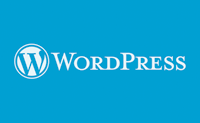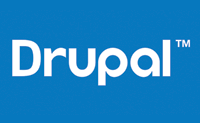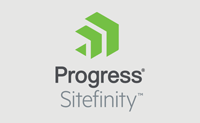This September’s Vancouver Web Design Meetup saw four content management system (CMS) opinion leaders battle it out for CMS supremacy. You can read about the products they promoted in this blog.
Choosing the right CMS
The meetup kicked off with one presenter giving an overview of where the most popular content management systems fit within different size organizations. The presenter was not biased to any particular CMS but stressed the importance of selecting a CMS that fits the scale and scope of a company’s online endeavor.
Websites were categorized as entry-level, mid-level or enterprise, based on website features, complexity and initial investment budgets.
Entry-level:
Essentially brochure style websites costing approximately $5k to $25k.
Mid-level:
Corporate sites of moderate complexity with simple integrations and costing approximately $25k to $200k.
Enterprise:
Complex, feature-rich websites with 3rd party system integrations, marketing automation suites and typical investments of $200k+.
Where do you fit?
Entry-level CMS Category
An entry level CMS can be a good choice for an organization with limited online marketing budgets and in-house expertise. These organizations usually want to have practical website features along with the ability to simply add, modify, or delete web content.
In our meetup, WordPress proved to be the de facto player in the entry-level field, however, it was argued that today’s WordPress can support entry and mid-level web requirements, and even some enterprise needs.
Entry-level CMS will be:
- Easy to use and manage by non-technical users.
- Supported by a vast developer community.
- Proven with lots of useful plugins or widgets.
- Customizable to achieve your desired design standard.
- Capable of supporting digital marketing initiatives, plugins, or 3rd party tools.
Mid-level CMS Category
Drupal, Sitefinity and Kentico CMS represented the mid-level field. Each of these systems offers a powerful and extensible CMS solution with:
- Workflow management.
- Extensive digital marketing capabilities.
- Extreme scalability and customization opportunities.
Enterprise Level CMS Category
The enterprise systems that qualified here include offerings from: Acquia, Adobe, IBM, Oracle, Sitecore and Sitefinity. These are the CMS systems that will support organizations’ looking to evolve and execute a digital transformation strategy.
CMS’s that fall under this category are proven to be highly reliable and scalable. They can integrate with ecommerce systems, CRM’s and or POS systems.
Enterprise CMS’s will have extensive marketing tools that enable marketers to organize data and continually enhance their web offerings to deliver exceptional user experiences and optimal conversions.
To Choose a CMS, It’s Important to Know Which Questions to Ask.
Here is a checklist to consider when you make that decision.
- What is the purpose of the website? Is it to sell, inform, provide customer service, market, or?
- What do you want the site to do; i.e. what features and functions will you need it to provide?
- Who is your audience and what devices will they use?
- Will your site need to display multiple language versions?
- Do you intend to deliver personalized content?
- Will you employ marketing automation?
- Who is going to manage your website? Will it be managed by marketers or technologists, and how many will do the work?
- What CMS is your team familiar with now?
- Are there trained personnel to support you in-house?
- What level of CMS service support will you need?
- Is there a preferred software framework preference; .NET or open source?
- What are your hosting needs; hosted or SAAS?
- Will your site accommodate multiple brands or micro-sites?
CMS Offerings
Knowing your business and what your site must do for it, we can start to compare some popular CMS offerings. In our meetup each presenter was passionate that their offering is ‘the best’, and although each offering can ‘technically’ satisfy most of your organization’s requirements, each will have strengths and limitations that you should be aware of.

WordPress CMS – the popular entry-level system.
WordPress is by far the CMS market-share leader with 59% of the CMS marketplace.
As noted earlier, WordPress is typically employed for entry-level website builds, however, that notion was dismissed as the National Post, Southern Bancorp, The Obama Foundation and Five Thirty Eight news websites – all fairly complex and substantial – are all powered by WordPress.
Our meetup’s WordPress advocate demonstrated the tool’s ease of use, its potential for customization, and WordPress’ flexibility to enable content contributors to create rich content via page builder, long scrolling pages, videos, and embedded social channels.
One can’t talk about WordPress without discussing security. Since WordPress is the dominant world-wide CMS, it’s understandable that it is also the CMS that is most targeted by hackers. Our presenter pointed out various security plugins and protocols that can be applied to thwart those with bad intentions.
As WordPress is essentially a free community developed product, you shouldn’t expect the same level of professional support that is offered with a paid licenced CMS. Nevertheless, our presenter pointed out that WordPress is supported by a vibrant and growing community that can help you develop, grow and improve your WordPress website. In addition, professional vendors should be able to offer you WordPress security support.

Drupal – the open source CMS for mid and high-level builds.
Our evening’s Drupal evangelist gave an account of the Drupal CMS and described Drupal as an open digital experience platform to help organizations deliver web content across channels and devices. Innovation, speed and scalability are hallmark features inherent to the platform.
Drupal has been employed by a number of major brands, so the product is well proven and trusted in the marketplace.
In terms of strengths, Drupal has many, the fact that Drupal is an open source technology means that the product is highly flexible, accessible, and free of license fees. With 37,000 free modules, 2,400 free themes, and a community of over 100,000 active developer contributors, Drupal can be configured to accommodate virtually any website scenario. It is built around responsive design and can integrate with an organization’s digital technology ecosystem.
Drupal can fulfill both mid-level and enterprise requirements and the total cost of ownership when comparing Drupal to other enterprise-level is potentially lower. On average fifty percent of Drupal’s project budgets range between $75K and $300K.
Of course there is no perfect CMS and among Drupal’s strengths are some notable drawbacks. Getting developers or in-house teams up to speed on Drupal can be daunting as the learning curve is steeper than many competitive CMS systems. Part of the reason for this has to do with the vast number of modules and connectors that are available with Drupal. And although the CMS is free, you can expect the overall development cost to be higher, as Drupal out-of-the-box is bare-bones and needs a lot of configuring.

Sitecore – the original mid to high-level proprietary CMS.
Sitecore is one of the earliest .NET content management systems and sits at the top of Gartner Magic Quadrant for Web Content Management 2017. Sitecore is an ideal CMS for enterprise-level organizations with corporate marketing departments.
The CMS was spun out of Pentia A/S (a Microsoft systems integration company) in 2001. Today Sitecore positions its brand as a ‘customer experience management company’. To support this assertion Sitecore provides a robust and secure CMS that features a multi-channel marketing automation suite and flexible content authoring capabilities.
A key feature of Sitecore’s marketing automation suite is the ability to ‘market in context’ which essentially enables marketers to market based on an individual customer’s behaviour. Sitecore calls this ‘contextual intelligence’. Contextual Intelligence gives you the information you need about you consumers, e.g. their location, profile, social sharing, content preferences, devices, etc. so the content you provide is more relevant to and the overall customer experience is more meaningful
On the downside Sitecore’s feature set is so extensive that many features will never be used. And since it is a proprietary CMS system your organization will need to pay for an enterprise-level license that is likely to be out of reach to small and many mid- size organizations.
And what may be both a pro and con of the CMS Sitecore is built on the .NET platform, so if you want to deploy custom controls or plugins you will need to be an expert .NET developer to make that happen. Nevertheless, .NET is an ideal platform to connect with 3rd party applications and other ASP.NET services.

Sitefinity – an up-and-coming heavyweight among the mid to high-level proprietary CMSs.
While we are talking about .NET systems, let’s look at an acknowledged up-and-comer, Sitefinity.
For mid to large size organizations that are looking for a .NET CMS that is dead easy to use, scalable, secure, and comes with robust out-of-the-box modules plus an easy to use but sophisticated marketing suite, Sitefinity might be the right fit.
Sitefinity is a proven and reliable CMS solution used by some heavyweight brands like Microsoft, Sony, 3M, IBM, Toshiba, Coca-Cola, BBC, Toyota, City Bank, to name a few. And this year Sitefinity CMS was named a Contender in the 2017 Forrester Wave Report for web content management systems.
One major reason for choosing Sitefinity is its simple and intuitive user interface. Sitefinity is arguably the easiest to use CMS in the mid-size to enterprise space. The simple UI can mean better adoption across an organization as non-technical users can easily modify, create and maintain website content.
What sets this product apart is the company’s focus on providing a digital experience that can help you improve your customer’s experience via segmentation / personalization, conversion tracking, touchpoint attribution, and other tools – like big data crunching and machine learning recommendations – that let marketers manage and continually improve the customer journey.
Like Sitecore, Sitefinity comes with a licence fee, though Sitefinity’s licence cost is aimed to appeal to mid-market and enterprise organizations and will likely be out of reach to smaller organizations.
Vancouver Web Design Meetup
The content of this blog has been adapted from a recent Vancouver Web Design Meetup.
Join Vancouver Web Design Meetup today and gain valuable insights from experience, local industry leaders on all topics related to website design, development and digital marketing. Events are FREE and held in downtown Vancouver.
Talk to a Website Specialist Today
Book a free consultation and learn how Graphically Speaking can help add value to your business.








